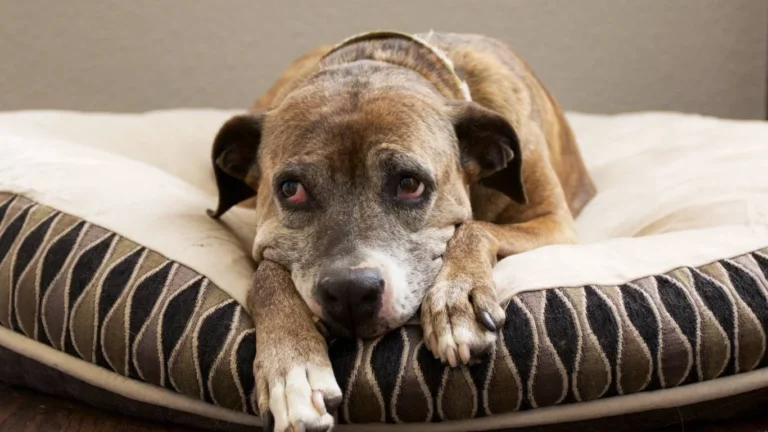What to Do if Your Dog Has Blood in Their Urine: Immediate Action Needed
So, you just noticed something strange during your dog’s potty break — a pinkish tint in the pee, maybe even a little red. Yikes, right? If you’re wondering what to do if your dog has blood in their urine, you’re definitely not alone. I’ve had panicked pet parents call the clinic in full freak-out mode over this exact issue, and honestly, I get it. Seeing blood where it’s not supposed to be is always jarring. But before you let your imagination run wild, let’s take a breath and walk through it. There’s a lot to consider, and I’ll guide you through it just like I do when someone calls the vet office.
First, Take a Deep Breath: Is It Really Blood?

Sometimes what looks like blood might be something else entirely. Trust me, I’ve had owners bring in urine samples that turned out to be discolored for other reasons — like red-tinged food, certain meds, or even just dehydration making everything look darker than usual. That said, if it *is* blood (and it very well might be), then yeah — it’s time to get curious and a little proactive.
Spotting the Signs: More Than Just the Color
When I worked in the clinic, we always told pet parents to watch for a *cluster* of symptoms, not just one. If your dog is suddenly squatting more often, straining, licking their bits a lot, or whining when they pee — those are all red flags that something’s not right.
- Pink, red, or rust-colored urine
- Frequent urination (or attempts to go)
- Visible discomfort or yelping during peeing
- Lethargy, whining, or acting off
- Accidents in the house when that’s not normal
One little old dachshund we saw had all of those, and it turned out to be a nasty urinary tract infection (UTI). Thankfully, we caught it early, and a round of antibiotics had her back to her sassy self in no time.
Common Causes of Blood in Dog Urine

This is where things get a bit more technical — but I promise, I’ll keep it real. There are quite a few reasons your pup could be peeing red, and some are more serious than others. Here are some of the most common culprits we’ve seen:
- Urinary Tract Infections (UTIs): Super common, especially in female dogs. Think of them like human UTIs — uncomfortable and persistent. Dogs might squat often and only produce a few drops.
- Bladder Stones: These can cause irritation or blockages, leading to bleeding. Some breeds like Dalmatians or Bulldogs are more prone to them.
- Kidney Disease or Injury: Damage to the kidneys or even trauma (like getting hit or falling hard) can cause blood to show up in the urine.
- Prostate Issues (in male dogs): An enlarged prostate can lead to blood-tinged urine, especially in intact males.
- Cancer: I hate saying it, but tumors in the bladder or kidneys sometimes show up this way. It’s rare, but worth ruling out.
- Poisoning or Toxin Exposure: Certain toxins, like rodenticides, can affect blood clotting and cause internal bleeding — including in the urinary tract.
We once had a golden retriever who came in with blood in his urine after a long weekend hiking trip. Turned out he’d gotten into some toxic mushrooms. It was scary, but he pulled through because the owners acted fast. Speed really matters.
What to Do if Your Dog Has Blood in Their Urine

Okay, let’s say you’ve confirmed it — there’s blood. Here’s what I would personally tell a client at the clinic, based on my own experience and what our vet team recommends:
- Collect a sample (if you can): I know, it’s not fun crouching with a plastic container under your dog at 7am, but a fresh urine sample can save time and help your vet run tests.
- Call your vet right away: Even if your dog seems fine otherwise, blood in the urine is always worth checking out. If it’s after hours, contact an emergency vet clinic.
- Watch for other symptoms: Make note of any changes — appetite, energy levels, vomiting, etc. Vets love details, and they really help us narrow things down.
- Don’t panic, but don’t ignore it: In most cases, this isn’t an instant death sentence, but it *is* a sign your dog needs some attention. Trust your gut and don’t wait too long.
Side note: I’ve had dogs come in where owners waited a few days, thinking it might just go away. By then, a simple UTI had turned into a kidney infection — which is way more complicated and costly to treat.
Quick Tip from the Clinic:
If your dog is on any meds or supplements, bring them with you to the vet. Some ingredients (even in over-the-counter stuff) can affect the urinary tract or mask symptoms. We once had a dog taking cranberry pills that made the urine smell fruity and made diagnosis tricky!
What Happens at the Vet: Behind the Scenes

Alright, let’s say you’ve booked that vet visit — gold star for you, by the way. Here’s what usually happens behind the scenes (and yes, I’ve helped with this process more times than I can count).
First thing your vet will likely do is run a urinalysis. We either dip a test strip in the sample or spin it down in a centrifuge. If there’s bacteria, crystals, or blood cells, it’ll show up pretty clearly. Sometimes we’d even pop the urine under a microscope — and let me tell you, I’ve seen some wild stuff through that lens, including tiny parasites swimming around. Gross but fascinating.
If the urinalysis shows anything weird or if your pup’s been sick for more than a day or two, the vet might recommend:
- Bloodwork: To check kidney function, hydration, and any signs of infection or inflammation.
- X-rays or Ultrasound: These are biggies if we suspect bladder stones, tumors, or trauma. I always tell pet parents that imaging gives us a sneak peek into what’s happening inside — kind of like detective work.
- Urine culture: This tells us exactly what kind of bacteria is causing the infection (if it’s a UTI), and helps the vet pick the right antibiotic.
One time, we had a German Shepherd whose urinalysis looked borderline normal, but the ultrasound showed a massive stone lodged in the urethra. Without imaging, we would’ve totally missed it. Just goes to show how important digging deeper can be.
Treatment Options: What Your Dog Might Need

The good news? Most causes of blood in urine are totally treatable — especially if caught early. Here’s a quick breakdown of the most common treatments we hand out at the clinic:
- Antibiotics: The go-to for UTIs. Depending on the bug causing the infection, we usually prescribe a 7- to 14-day course. I always reminded pet owners — please finish the meds! Stopping early just sets you up for round two.
- Pain meds or anti-inflammatories: Peeing razor blades? No thanks. If your pup’s straining or clearly uncomfortable, these make a huge difference.
- Prescription diets: For dogs prone to bladder stones, we’d sometimes recommend a special food that dissolves certain crystals or prevents new ones from forming. They’re not cheap, but they work. I’ve seen dramatic changes just from a diet switch.
- Surgery: If there’s a large stone, a tumor, or a blockage, sometimes surgery is the only option. Thankfully, it’s not super common, but when needed, it can be lifesaving.
Every so often, a dog would come in and we’d discover they needed a total lifestyle change — like drinking more water, switching to canned food, or getting more exercise. It’s kind of amazing how small changes can help avoid big vet bills.
At-Home Care & Monitoring After Treatment

So, treatment’s done and your dog’s on the mend. Awesome! But your job isn’t totally over. As a vet assistant, I always gave clients a short list of ways to keep tabs on their pup and support healing at home:
- Keep your dog hydrated: Fresh, clean water at all times. Dehydration concentrates urine, which can irritate the bladder more.
- Monitor their peeing: Yes, you’re back to being a “pee detective.” Watch for signs of straining, pain, or if the blood returns. Any red flags? Call the vet.
- Stick to any diet recommendations: If your vet suggested a urinary support food, don’t mix in other treats unless approved. It messes with the balance.
- Limit activity if advised: Especially post-surgery or during an infection. Let them rest and recover — no fetch marathons just yet.
I had one little Yorkie named Max come back for a recheck, and the owner was like, “He seems better, but I stopped the meds halfway through because he hated the taste.” Big facepalm moment. We had to start all over again. So yeah, follow-through is key!
Proactive Tips to Help Prevent Future Issues
If your dog’s had one urinary issue, they’re a little more likely to have another. But prevention doesn’t have to be complicated. Here’s what I usually recommended to clients during their follow-ups:
- Regular vet visits: Annual checkups help spot early warning signs, especially in seniors.
- Encourage more water: Try adding a splash of low-sodium broth to their bowl or using a pet water fountain. Hydration = healthier pee.
- Don’t ignore small changes: If your dog’s suddenly peeing more or asking out at odd times, listen to your gut. Catching issues early is a game-changer.
- Consider supplements: Ask your vet about cranberry extract, D-mannose, or urinary health chews — we used to carry a few in the clinic that dogs loved.
And here’s the deal — being a pet parent isn’t always predictable. You can do everything right and still end up at the vet with a sick pup. But the more you know, the more prepared you are to help your furry friend feel better, faster.
Next up, we’ll dive even deeper into chronic or recurring urinary issues and what long-term management can look like — especially for older dogs or pups with sensitive systems.
Chronic Urinary Issues in Dogs: Managing Long-Term Health

So, you’ve been down the road of dealing with blood in your dog’s urine, and maybe the treatment worked wonders. That’s amazing — but here’s something important to keep in mind: If your dog’s had one episode of blood in their urine, they could be at risk for it happening again, especially as they get older. I’ve worked with countless older dogs in the clinic, and urinary problems can become more of a concern as they age. Here’s what to consider for long-term health:
Understanding the Risk Factors for Chronic Issues
Not every dog will face chronic urinary issues, but certain factors can increase the risk. I’ve seen dogs of all shapes and sizes deal with repeat UTIs or bladder problems, and some breeds are just more prone to them. Here are a few common risk factors I always mention to concerned pet parents:
- Age: Older dogs, especially those over 7 years old, are more likely to develop chronic urinary issues. Their immune systems might not be as strong, and they could be dealing with underlying health conditions that complicate things.
- Breed: Certain breeds, like Dalmatians, Bulldogs, and Shih Tzus, are known for being more prone to urinary problems. Their anatomy or genetic makeup can put them at higher risk for bladder stones or infections.
- Pre-existing conditions: Dogs with diabetes, kidney disease, or hormonal imbalances are more susceptible to recurring urinary issues. Managing these conditions carefully is key to preventing more problems down the line.
- Diet and hydration: A poor diet or insufficient water intake can lead to concentrated urine, which can irritate the urinary tract and create problems over time. It’s one of the first things I ask about during a consultation.
If your dog is at risk for any of these factors, I always suggest being extra vigilant. Regular vet checkups, watching for signs of trouble early, and paying attention to their diet can go a long way in preventing recurring urinary issues.
What You Can Do at Home: Preventive Measures and Lifestyle Changes

Now, let’s talk about how you can be your dog’s best advocate at home. Prevention is a huge part of long-term care, and there are simple lifestyle changes that can help keep urinary issues at bay:
Hydration: The Unsung Hero
Water, water, water. It sounds simple, right? But I cannot tell you how many times I’ve had owners mention that their dog isn’t a big drinker. Here’s the thing: Dogs that aren’t drinking enough water are at higher risk for urinary problems, including concentrated urine that can lead to bladder stones or infections. A well-hydrated dog has a much healthier urinary tract.
Here’s a fun trick I picked up from one of our clients — they’d put ice cubes in their dog’s water bowl. At first, I thought it was just a cute idea, but it worked wonders. Their dog loved the crunch, and it made him drink more! You could also try offering low-sodium broth in their water bowl or use a water fountain, which seems to appeal to some dogs more than a stagnant bowl.
Diet: Food that Supports Urinary Health
Just as hydration plays a huge role, so does diet. A high-quality, balanced diet is essential to keeping your dog’s urinary system functioning well. Some commercial dog foods include specific ingredients that support urinary health. These foods are designed to reduce the formation of crystals or stones and keep things flowing smoothly. I’ve seen dogs thrive on these diets after just a few weeks, especially if they had recurrent bladder issues before.
If your dog is prone to urinary issues, talk to your vet about prescription foods that help prevent bladder stones or urinary tract infections. Brands like Hill’s Prescription Diet and Royal Canin offer specialized formulas that I’ve seen make a noticeable difference.
Regular Vet Visits: Staying on Top of Their Health
If your dog is older, a breed that’s more prone to urinary problems, or has had issues in the past, I strongly recommend regular vet visits every 6 months. Sometimes, subtle symptoms can go unnoticed — and as a vet assistant, I can’t tell you how many times we’ve caught something early during routine exams. Even if everything seems fine, check-ups can help us detect early warning signs of infection, stones, or kidney disease.
When to Contact Your Vet: Don’t Wait for It to Get Worse
Even though many urinary issues are treatable, you don’t want to wait until your dog is in obvious pain. If you notice any of these signs, don’t hesitate to contact your vet:
- Straining to urinate or producing very little urine
- Frequent urination or accidents in the house
- Blood in the urine (even a small amount)
- Pain or discomfort when urinating (such as whining or restlessness)
- Vomiting, lethargy, or loss of appetite — signs that the infection may have spread or your dog’s health is worsening
The sooner you get in touch with your vet, the sooner they can diagnose the issue and start treatment. If your dog is straining to urinate and nothing’s coming out, or if the blood in their urine is accompanied by other symptoms like vomiting, you may be dealing with a more serious condition, like a blocked urinary tract or kidney failure. These situations are emergencies and need immediate attention.
References
For more detailed information on dog health, including urinary issues, I recommend checking out these trusted resources:
- American Kennel Club (AKC) – Information on breed-specific health risks and care.
- PetMD – Trusted veterinary advice and articles on dog health.
- National Institutes of Health (NIH) – Research on animal health and veterinary studies.
- Health.com – General health tips that apply to both humans and pets.
Disclaimer
The information provided in this article is intended for informational purposes only and should not be considered a substitute for professional veterinary advice. Always consult with a qualified veterinarian for any health concerns or treatment options for your dog.






